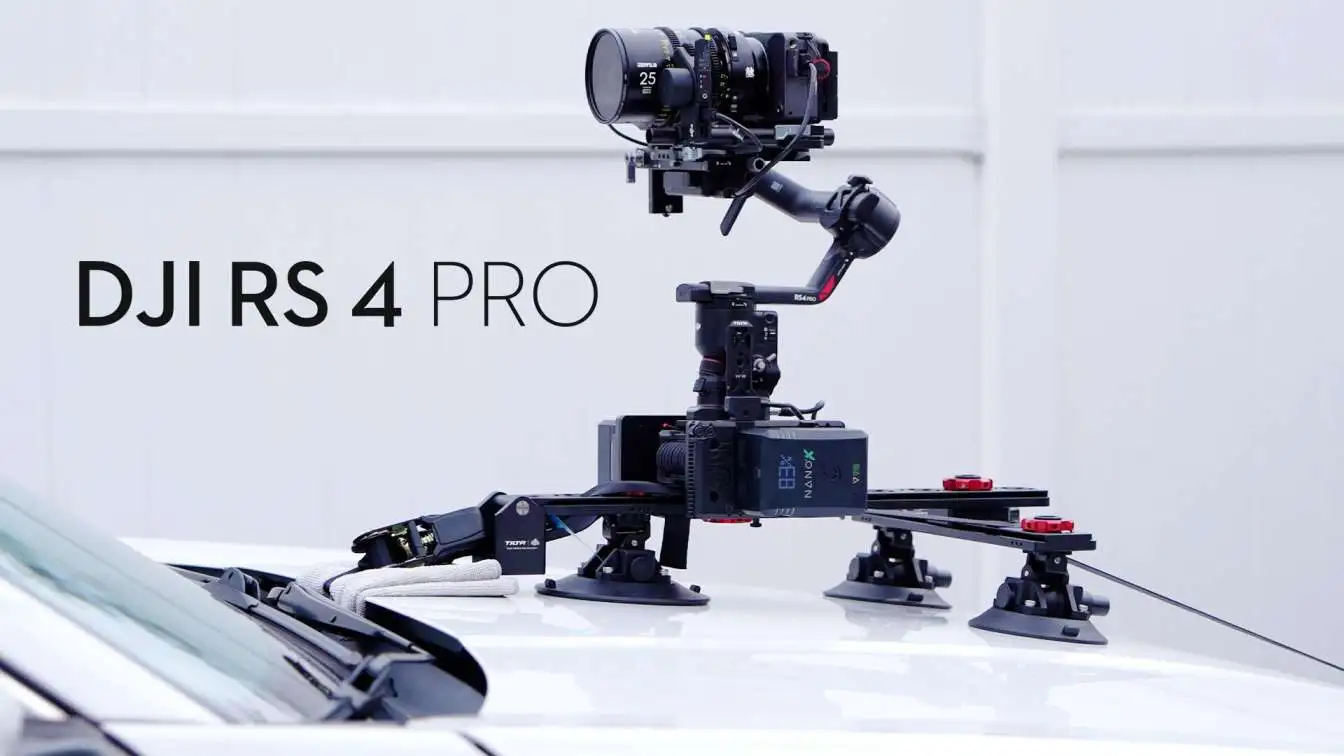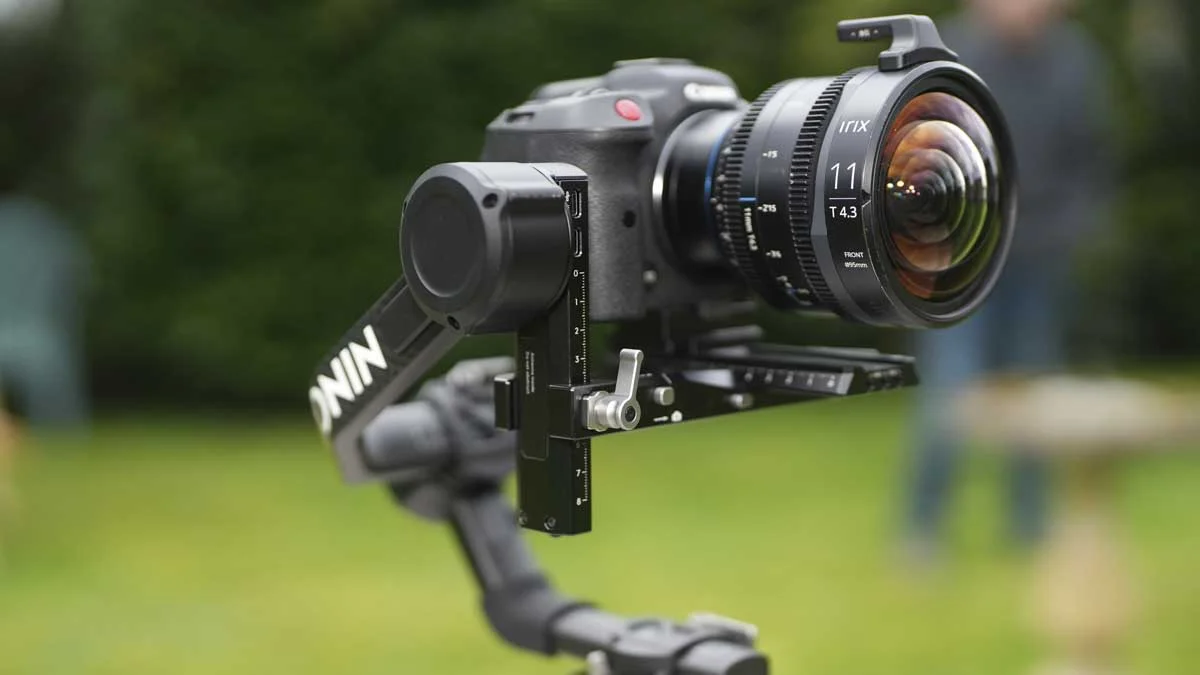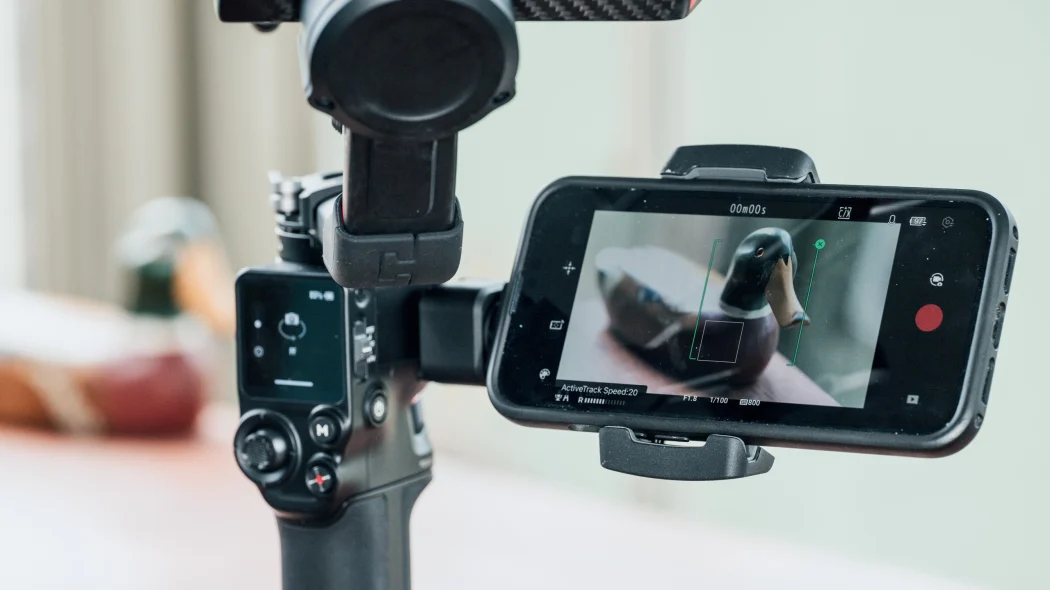
Dji Rs 4 Pro Review: The Best Gimbal Just Got Better Slightly
Catching stable film is perhaps the earliest and most significant stages towards making an expert level video. Beside inventive camera work that intentionally searches out precarious film for example, to depict disorder and confusion a video that needs smooth strength is significantly diverting to crowds.
Movie producers utilize different hardware to make their recording as understood and smooth as could be expected, utilizing carts, GlideCams and, most generally, gimbals.
In the event that you've at any point utilized a gimbal, you realize how testing it tends to be to set it up. Only a couple of years prior, getting your camera on a gimbal required a sensitive difficult exercise. In any event, when you think you have it adjusted, there is as yet a gamble of undesirable jerks and shakes while utilizing it.

Nonetheless, DJI's RS line of handheld gimbals has enhanced the space, making catching balanced out, proficient video more straightforward. Its most recent deliveries, the DJI RS 4 and RS 4 Master, are the two best gimbals at present available.
Nonetheless, would they say they are a lot of an improvement over the DJI RS 3 and DJI RS 3 Master? Furthermore, is what they bring to the table to the point of legitimizing a redesign on the off chance that you currently own a RS 3 model?
DJI RS 4 Pro: What’s new?
Generally, the RS 4 Expert varies little from its ancestor. Nonetheless, there are a few important redesigns that positively make the RS 4 Master the better gimbal.
Support for Native Vertical Shooting
One of the RS 4's most remarkable updates is added help for local vertical video shooting. By basically opening the level plate and realigning it in an upward direction, you can now change from even to vertical rapidly. In the past age, you expected to purchase an extra mount to shoot vertical video.
Given the roaring short-structure video sort, we're glad to see the RS line currently upholds vertical video catch without requiring an extra buy. Both RS 4 models offer local vertical shooting. That implies you approach the component no matter what the model you pick.
Payloads
The RS 4 Genius doesn't contrast from its ancestor concerning payload. Both the RS3 Genius and the RS4 Star support 4.5 kg (10 lbs) of gear. In the event that you pick the less expensive RS 4, you have less to work with at 3 kg (6.6 lbs).

Nonetheless, it's worth focusing on that the slant hub arm is longer in the fresher age. This implies you'll have the option to add more extras. Also, DJI has added a flexible arrangement manual for the upper fast delivery plate to assist with making camera mounting safer.
New Automated Gimbal Locks
Fitted with second-age computerized pivot locks, the RS 4 can rapidly switch among working and rest modes. This paces up your work process on set and, as a general rule, makes the experience of utilizing the gimbal smoother than different gimbals.
Additionally, DJI has overhauled the locks to have more modest holes when locked. This at last should diminish gimbal shake, yet we didn't see a lot of distinction during our tests.
More Customization
For additional button customization, there's currently a joystick mode switch that permits you to switch back and forth between gimbal development and focal point zoom control through the joystick on the front (requires a viable focal point and camera).
Additionally, there are currently more trigger and dial choices. The trigger can lock the gimbal or trigger FPV mode, and the dial can change ISO, gap and that's only the tip of the iceberg.
Brand-New Automatic Screen Lock
While the DJI RS 4's OLED touchscreen stays immaculate by DJI, it currently has another auto-lock include. This component has the gimbal's screen, which, when locked, shows the gimbal's ongoing gimbal and joystick modes.
DJI says that the lock include forestalls coincidental contacts, and we concur. Besides, the screen shows the data at a low splendor, so you can save battery while really taking a look at your ongoing modes.
A Significant Upgrade to the Motors
The RS 4's engines have gotten a critical redesign, flaunting a 20% expansion in force. This gives more grounded, more responsive developments across all tomahawks.
This expansion in power, joined with the up and coming age of DJI's RS Adjustment calculation, means better treatment of heavier arrangements and more versatility in testing shooting conditions.
New Intelligent Features
The DJI RS4 Ace isn't just about mechanical upgrades; it additionally presents new astute highlights like Motionlapse, Track and Scene, close by the already seen PTF, PF, FPV and 360 roll modes.
The new age's particular adjustment for vehicle mounting is likewise really slick. The Vehicle Mount mode streamlines the adjustment calculation in view of ongoing vehicle vibrations and wind opposition examination, promising stable film even in high-movement settings.
Dji Focus Pro Compatibility
One more enormous feature of the RS 4 and RS 4 Expert is its similarity with DJI's new DJI Concentrate Ace. While a different framework from the RS 4, the Concentrate Expert, when utilized with the RS 4, can give extra self-adjust and manual concentration, iris and zoom (FIZ) control.

Integral to this framework is the LiDAR Master. When matched with the Concentrate Genius Engine, this conveys great self-adjust execution, with a 77% expansion in running focuses contrasted with past models.
This upgrade empowers a most extreme centering distance of 20 meters and vigorous subject following, even in testing conditions. The framework's revive rate and wide center field further add to its capacity to convey sharp, reliable concentration.
BG70 High Capacity Battery Grip Compatibility
In conclusion, the RS 4 and RS 4 Genius are viable with the new BG70 High Limit Battery Grasp. This grasp not just offers a faltering runtime of up to 29.5 hours yet in addition upholds power conveyance to cameras and embellishments. Its PD quick charging capacity is a huge upside for long shooting meetings.
Putting the Dji Rs 4 Pro to the Test
We tried the DJI RS 4 Ace, and there's no question that it's one of, on the off chance that not exactly amazing, gimbal available at the present time. Getting a camera adjusted on the gimbal just required a couple of moments, and the aligning screen let us in on the slight changes we expected to make it great.
Related knowledge with less-high level gimbals helped, yet the gimbal's Teflon covering had the greatest effect. Contrasted with the RS 3 Expert, it was a lot simpler to make slight changes while adjusting on the RS 4 because of diminished contact.
Getting extras like the center engine and LiDAR associated took more time; we needed to concentrate on the manual a piece. In general, be that as it may, our somewhat huge arrangement fits serenely on the RS 4 Genius.
We suggest that you go with the Genius variant assuming you likewise run with a weighty arrangement. The standard RS 4 has a lower payload of 6.6 pounds contrasted with the RS 4 Ace's 10-pound limit.
Whenever it was adjusted and all set, working the gimbal was a breeze. Having the option to interface the camera to the gimbal through Bluetooth was great, as well, as it killed the need to associate by means of a link.
Furthermore, you can utilize the DJI Ronin application to control highlights like dish and slant. This wouldn't be great for the administrator, yet this component could be valuable assuming you have somebody helping from a distance or on the other hand on the off chance that you're shooting yourself and have to change the outlining behind the scenes.
Is the Dji Rs 4 Pro Worth It?
With everything taken into account, while there's very little contrast between this model and its ancestor, the RS 4 and RS 4 Expert are plainly the better gimbals. The joystick mode and other new customization choices for the trigger and dial are perfect, and the unpretentious plan updates certainly close the hole that was absent from past models.
On the off chance that you don't currently possess the RS 3 or RS 3 Genius, emphatically think about one of the RS 4 Star models. In the event that you have the RS 3 or RS 3 Star, you as of now have an extraordinary gimbal. You most likely don't have to move up to the RS 4.
Most utilizing the RS 3 or RS 3 Master have either become acclimated to shooting without the additional elements the new models offer, or their nonattendance doesn't irritate them. While we tracked down the RS 4 Genius to offer more smoothed out activity during our tests, we wouldn't be crushed assuming we needed to return to the RS 3 Master or RS 3. Both are incredible gimbals all things considered and offer comparative encounters and results.
In any case, at last, the decision is yours. On the off chance that you could profit from a bigger battery grasp, more straightforward adjusting, more grounded engines and additional similarity with mounts and frill, then, at that point, you can't turn out badly with moving up to the RS 4 or RS 4 Expert.


